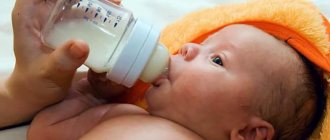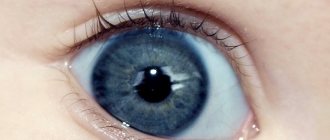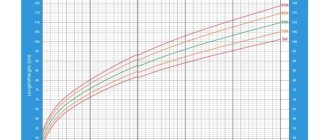Colic in newborns is a physiological process, characterized by pain in the abdominal area, mainly up to the age of 3 months. The cause of pain (colic) in the intestines in newborns is not fully understood, but the most common belief is that this is due to the growth of the intestines. People come up with many ways to somehow help a child during painful periods, but not everyone is helped by the same thing. There are babies for whom nothing helps at all; in such cases, colic just needs to be overcome.
But mother’s colic also includes pain in the child, which appears as a result of the accumulation and difficult passage of gases from the intestines, as well as due to constipation. Despite the fact that colic, gas, constipation are all different concepts, we will touch on all these topics in this article, because they all provoke abdominal pain in the child. Massage for constipation, gas, colic in newborns has much in common, but there are small differences that improve the effectiveness of the procedure in each specific case.
How to help a child with colic?
1. A heating pad on the stomach. Heat is known to be an effective analgesic.
2. Pain relieving drops, with the doctor’s permission.
3. One of the effective ways to ease the period is massage for colic in newborns. It is advisable to do it not during attacks of pain, when the baby is all tense, but during quiet hours, for prevention. It is important that the baby’s stomach is relaxed, or at least not actively straining it. Through a very tense press, kneading the intestines is not achieved, so giving a screaming child a abdominal massage with colic is very problematic, especially for a mother who is not experienced in this matter. You have to catch quiet moments and massage.
How long should you massage your baby?
It's no secret that massage is a fairly pleasant and, most importantly, useful procedure. But how do children evaluate this procedure? And does the baby need it? Of course, massage for infants is an indispensable procedure for proper formation and full development. For the first 4-5 months, an infant is in a forced position with limited motor activity; he cannot sit, stand, stand, or roll over; until a certain age, his motor activity is represented by a chaotic scattering of arms and legs, which frightens him. And, as you know, movement is life. Therefore, even at this age, in addition to good nutrition and good care, the baby needs to move. The most optimal procedure with which you can compensate for the lack of physical activity in the first months of life is massage.
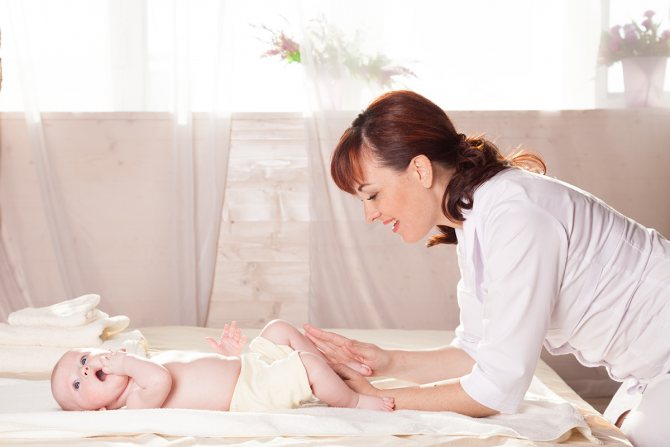
Also, scientists have proven that a child begins to perceive tactile sensations earlier than all others, and impulses from touching the skin go to the brain and have a beneficial effect on the entire child’s body. But in order not to harm your baby, when performing such a procedure, you should maintain a common sense approach.
Before you decide to prescribe a massage for your child, be sure to consult with your pediatrician, and it does not matter whether you perform the massage yourself or whether a massage therapist comes to you. Only a pediatrician gives an opinion on the state of your child’s health, decides whether your child can have a massage, and, if there are no contraindications, gives recommendations on how much to massage the baby and how many massage sessions the baby needs.
In fact, there are no specific standards; in massage, an individual approach should be observed, taking into account the fact that children are different - healthy, with congenital disorders, pathologies, diseases, plump, thin, and the age of the baby must also be taken into account. Based on this, there are several types of massage, they differ in the technique of massage movements and in duration. There are several types of massage: preventive or general massage - which is performed on healthy children to strengthen the musculoskeletal system, proper development and as a hardening and healing procedure in order to prevent various diseases. Specialized therapeutic massage is performed as an independent method of treatment or in combination with drug treatment for various pathologies in infants. Any massage, both preventive and therapeutic, can be performed on children older than 1-1.5 months; in exceptional cases, there are indications - congenital curvatures of the neck and feet, for massage at an earlier age. How long is a baby massage and what does it depend on? Depending on the age of the infant, a certain technique should be followed and the duration of the procedure itself varies.
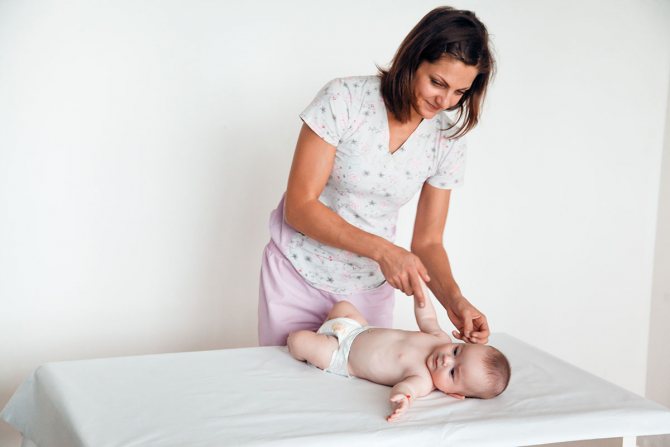
Thus, at the age of up to 3 months, the duration of one massage procedure is 30-35 minutes - children at this age are still poorly adapted to the world around them, so long-term effects on the body should be avoided. At the age of 3 to 12 months, the duration of the session lengthens and is 35-45 minutes - children react to others, at this age, during the massage, you can distract the baby with various rhymes and fairy tales. Children from 1 to 3 years of age and infants, here elements of active gymnastics are added to the massage, children usually perceive all these techniques in the form of a game, it is important to constantly communicate with the child during these exercises, the massage procedure for one-year-olds and older is longer and amounts to 45 -60 minutes. A child aged 3 years and older is a child with whom you can agree on something and explain something, such children are more diligent, due to which a massage session lasts 50-70 minutes. At any age, initial sessions are carried out for 5-10 minutes, gradually increasing the time.
In order for the child, and sometimes parents, to feel the effect of the massage procedure itself, one session is not enough, even 2 - 3 is not the number that is necessary for the baby. The technique, type of procedure such as massage for infants, and how many sessions to perform are determined by the pediatrician. It all depends on the health status of your baby. If the baby is healthy or has minor physiological characteristics at his age, a preventive or restorative massage is prescribed, the course of such a massage is 10-15 daily sessions. If the baby has congenital or acquired diseases or pathologies, then such children are prescribed therapeutic massage and its course is somewhat longer - 12 - 20 procedures. The more precise number of sessions is determined by the doctor and the massage therapist himself, depending on how the child behaves during the procedure, the severity of the disease, what kind of pathology, etc.
Why massage newborns with colic?
1. It reduces the frequency and severity of pain attacks.
2. Since children mostly experience colic at the age of 1-2 months, it is obvious that they are associated with a certain period of growth and adjustment of the intestines. Massage is a growth catalyst for babies. Those. If a child undergoes periodic massage procedures, then he will have fewer and fewer manifestations of immaturity of the nervous and other systems. Therefore, we recommend using this particular procedure as a preventive measure for painful manifestations of physiological intestinal growth.
Massage for children consists of two types of procedures: corrective and preventive.
Prevention of massage procedures is aimed at developing thinking, health, and strengthening the child’s muscles. This massage can be performed independently, on the recommendation of a doctor.
In certain cases, massage for infants can be ordered by a specialist, this will help to avoid incorrect actions and mistakes. The specialist is trained and knows the rules that will prevent injury to the fragile baby. All the details have been taken into account by the professionals, experience and practice have been gained, and you can safely entrust your baby to the specialists. If you want to perform massage procedures yourself, taking care of your child, then you can get advice from specialists. This will be a useful and correct action.
But if a doctor prescribes a corrective, therapeutic massage for you, then under no circumstances should you carry out such a medical procedure on your own. Only contact specialists.
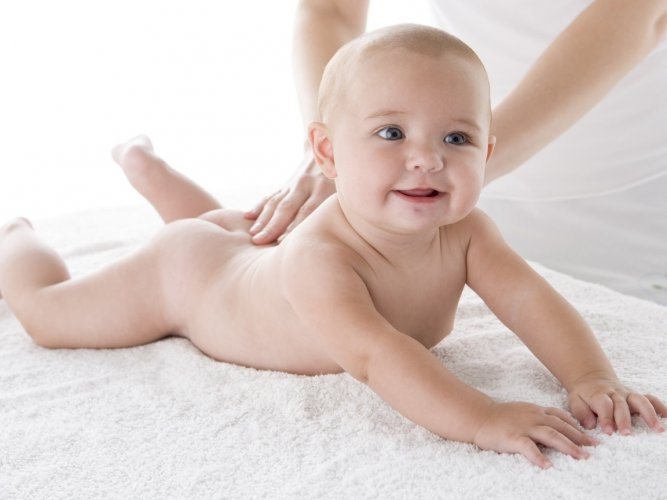
Therapeutic massage is aimed at correcting congenital defects, or preventing the development of emerging and progressive ones, such as flat feet.
In the case of babies up to 4 months old, infant massage will be effective for:
- intestinal colic. This is not a disease. This is a disorder during the formation of the digestive system, and it is not difficult to identify - the baby screams, pressing his legs and arms to his tummy. The massage therapist will help improve the body’s functions, help eliminate discomfort, and teach the mother how to perform such a massage on her own in emergency cases.
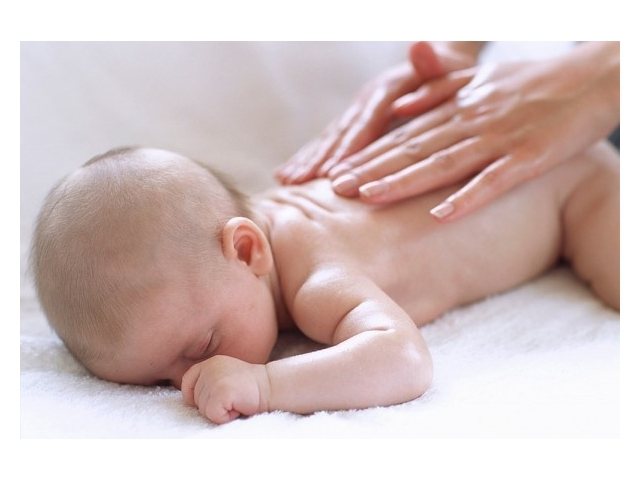
- torticollis. This is a congenital defect, and at an early age, specialists can begin to work to correct the disease. The baby must be more than six weeks old. No mother has the right to independently perform corrective therapeutic massage for her baby with such a diagnosis without special training.
- umbilical hernia. This massage can be prescribed before the baby is six weeks old. It is classified as therapeutic, and only a trained specialist with experience and good reviews has the right to perform it.
How do you know if a specialist is right for you? It's not that difficult. The child, with his reaction, will show you the whole truth about how experienced the massage therapist is. A good specialist will not continue massaging the baby if the baby is crying and showing signs of anxiety. If the specialist fails to calm the baby, he will definitely simply stop the procedure. The child’s mood and positive attitude towards massage is very important. One might even say: this is the most important goal of preventive massage and the main condition for therapeutic massage.

This article was prepared specifically for the site. Copying the article is permitted only with an active link to our website.
How to properly massage the tummy for colic in a newborn?
To ensure that your hands glide smoothly over your baby's skin, we recommend using oil. This is important because the stomach is a very sensitive area, and the child will not tolerate any unpleasant touches or movements. With the belly of newborns, even experienced massage therapists always have to say “you”. Techniques can be used from classic massage, directing movements along the muscle fibers, and when treating the small intestine clockwise, the large intestine along its course.
1. We begin the techniques by stroking clockwise around the navel, then along the large intestine, and in the opposite direction along the large intestine on the left side of the abdomen, moving the hand downwards, at the same time on the right side up. These strokes can be alternated and repeated several times. When using oil, slipping hands does not cause discomfort for babies.
2. Spiral rubbing in the same directions.
3. Kneading up to 3 months looks like a slight tingling of the abdominal muscles with your fingertips or a slight tingling.
4. Next, you can move on to the effects on the small and large intestines themselves. Movements for the thin: we knead in a spiral clockwise around the navel with a deeper immersion of our fingers into the stomach. This is done at a slow pace, listening to the child’s mood. On the large intestine, you can add raking movements from the massage columns to the same kneading.
It is best to fix the child’s legs when massaging the intestines by lifting them off the table with the second hand; such fixation additionally relaxes the pelvic muscles.
It is very important to include in the abdominal massage procedure for colic 0-3 months exercises that are useful for the passage of gas from the intestines.
1. Bending the legs with pressing the knees to the stomach, the child lies on his back. By tucking your legs, you can hold them a little in this position.
2. Laying on the stomach and on the table and on the fitball. A little pressure on the abdomen with your weight can greatly help the child. 3. Diagonal movements of the knee to the elbow, left to right and vice versa. In my opinion, the most effective exercise.
Is it worth it and is it possible to massage a child if he is crying?
If these are whims, which the mother herself must understand, and the child can be distracted from time to time, then massage can be done if there is a need for treatment. There are children who are “touchy”; they simply don’t like to be touched by anyone, much less kneaded. Typically, these babies do not cry from the beginning of the procedure, but they “whimper” in every possible way, and if the session continues throughout the entire limit of patience, and each child has his own reserve of patience, and even beyond that, then the baby may start to become hysterical. In such cases, you should not massage the baby for a long time; you need to carefully monitor the baby’s emotions. Fortunately, there are few such children.
The reason why children cry during a massage is often fear. A child can easily be scared of a specialist during the first procedure, just like any other stranger. Children's fears are most often possible from 3-4 months of age to 3-4 years. The usual reaction of adults when meeting a baby is a smile, often a silent one, and a close gaze to the child. It is the approach of a stranger that frightens the most, and if the stranger also touches the baby, then... In such cases, you need to start the introduction procedure with a natural greeting, and not overact any speech addressed to the baby without “lisping.” Sometimes we start the massage with the baby on the mother’s lap (for children over 6 months old), then, when the baby understands that there is no danger, we can move him to the table. Sometimes you have to lay the child on his stomach so that the baby does not look immediately at the massage therapist, or the child’s view is blocked by some book.
Newborn massage technique
The body of infants is very fragile, and the skin is delicate. Therefore, any massage movements should be gentle and stroking. It is worthwhile to forget about intense rubbing, kneading or strong pats for a while. It is best to move in the direction of lymph flow: from the tips of the toes towards the buttocks and from the palms to the shoulders.
It is important to remember that babies under 3 months should not massage the inner thighs, armpits, areas under the knees and in the elbows. Also try to avoid interaction with the fontanel area; this area is now very tender and sensitive. Before starting the procedure, make sure your hands are warm enough. You can warm them up easily: rub one hand vigorously against the other for 5-7 seconds.
The skin of newborns is very thin, the concentration of lipids (fat-like substances) on its surface is lower than that of adults. Therefore, infants often develop cracks and redness. When practicing massage for newborns, you can use a special oil that will eliminate dry skin and relieve irritation. But you need to be especially attentive to the composition of the product so as not to cause unwanted allergies in your baby.
My Sunshine® care and massage oil is ideal for restorative massage and baby skin care. Glides well on the skin without a sticky effect. Contains a complex of sea buckthorn, pine nut and dwarf cedar oils. Softens baby's skin, making it soft and silky. Hypoallergenic*, tested and recommended by pediatricians for babies from birth.
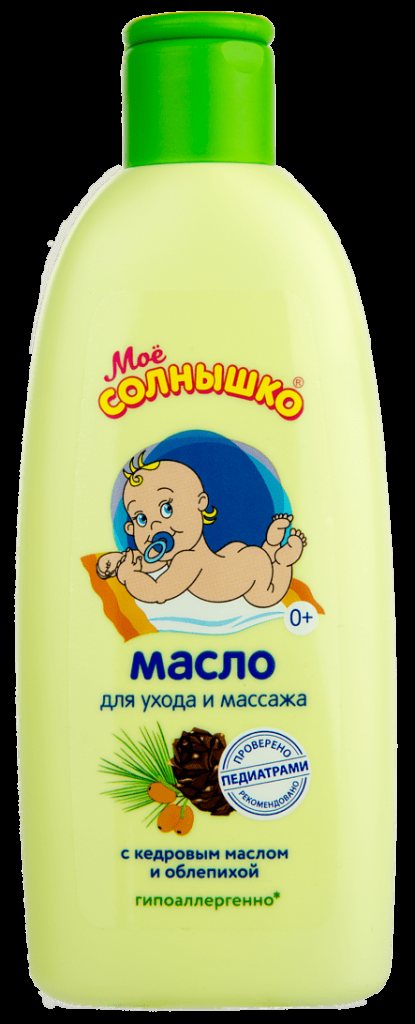
It is important to remember that the oil must first be warmed in your hands and only then applied to the baby’s skin.
During the session, smile at the baby, talk kindly to him, talk through your actions and their benefits for the child’s body. Tender maternal touches filled with love are the best elixir of health for infants.
The duration of massage for newborn babies is about 10-15 minutes.
